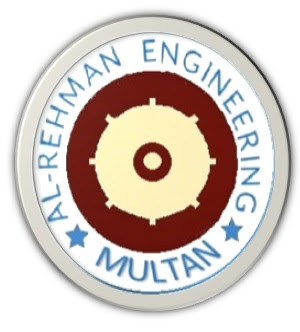1: Turning
Turning is the most common lathe machining
operation. During the turning process, a cutting tool removes material from the
outer diameter of a rotating workpiece. The main objective of turning is to
reduce the workpiece diameter to the desired dimension. There are two types of
turning operations, rough and finish.
Rough turning operation aims to machine a
piece to within a predefined thickness, by removing the maximum amount of
material in the shortest possible time, disregarding the accuracy and surface
finish. Finish turning produces a smooth surface finish and the workpiece with
final accurate dimensions.
2: Step Turning
Step turning creates two surfaces with an
abrupt change in diameters between them. The final feature resembles a step.
3: Taper Turning
Taper turning produces a
ramp transition between the two surfaces with different diameters due to the
angled motion between the workpiece and a cutting tool.
4: Chamfer Turning
Similar to the step turning, chamfer turning
creates angled transition of an otherwise square edge between two surfaces with
different turned diameters.
5: Contour Turning
In contour turning
operation, the cutting tool axially follows the path with a predefined geometry.
Multiple passes of a contouring tool are necessary to create desired contours
in the workpiece. However, form tools can produce the same contour shape is a
single pass.
6: Facing
During the machining, the length of the workpieces is slightly longer
than the final part should be. Facing is an operation of machining the end of a
workpiece that is perpendicular to the rotating axis. During the facing, the
tool moves along the radius of the workpiece to produce the desired part length
and a smooth face surface by removing a thin layer of material.
7: Grooving
Grooving is a turning operation that creates a narrow cut, a
"groove" in the workpiece. The size of the cut depends on the width
of a cutting tool. Multiple tool passes are necessary to machine wider grooves.
There are two types of grooving operations, external and face grooving. In
external grooving, a tool moves radially into the side of the workpiece and
removes the material along the cutting direction. In face grooving, the tool
machines groove in the face of the workpiece.
8: Parting
Parting is a machining operation that results in a part cut-off
at the end of the machining cycle. The process uses a tool with a specific
shape to enter the workpiece perpendicular to the rotating axis and make a
progressive cut while the workpiece rotates. After the edge of the cutting tool
reaches the center of the workpiece, the workpiece drops off. A part catcher is
often used to catch the removed part.
9: Threading
Threading is a turning operation in which a tool moves along the
side of the workpiece, cutting threads in the outer surface. A thread is a
uniform helical groove of specified length and pitch. Deeper threads need
multiple passes of a tool.
10 : Knurling
Knurling operation produces serrated patterns on the surface of a part. Knurling increases the gripping friction and the visual outlook of the machined part. This machining process utilizes a unique tool that consists of a single or multiple cylindrical wheels (knurls) which can rotate inside the tool holders. The knurls contain teeth that are rolled against the surface of the workpiece to form serrated patterns. The most common knurling pastern is a diamond pattern
11: Drilling
Drilling operation removes the material from the inside of a workpiece. The result of drilling is a hole with a diameter equal to the size of the utilized drill bit. Drill bits are usually positioned either on a tailstock or a lathe tool holder.
12: Reaming
Reaming is a sizing operation that enlarges the hole in the
workpiece. In reaming operations, reamer enters the workpiece axially through
the end and expands an existing hole to the diameter of the tool. Reaming
removes a minimal amount of material and is often performed after drilling to
obtain both a more accurate diameter and a smoother internal finish.
13: Boring
In boring operation, a tool enters the
workpiece axially and removes material along the internal surface to either
create different shapes or to enlarge an existing hole.
14: Tapping
Tapping is the process in
which a tapping tool enters the workpiece axially and cuts the threads into an
existing hole. The hole matches a corresponding bit size that can accommodate
the desired tapping tool. Tapping is also the operation used to make a thread
on nuts.










0 Comments